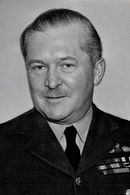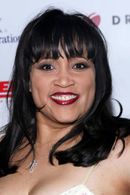Here is the biography of William Avery "Billy" Bishop:
Billy Bishop was born on February 8, 1894, in Owen Sound, Ontario, Canada, to William and Margaret Bishop. He was the middle child of three. Billy had a tough time in school due to his slight lisp and preferred swimming, horse riding, and the company of young ladies to team sports and academics.
In 1911, at the age of 17, Billy was enrolled in the Royal Military College at Kingston, Ontario, as his parents felt he might not be admitted to the University of Toronto due to his mediocre grades. However, he failed his first year and was allowed to enter the second year only on the condition that he stay longer at college to make up for what he missed.
Despite his academic struggles, Billy was commissioned into the Mississauga Horse of Toronto, a cavalry detachment of the 2nd Canadian Division. However, he was hospitalized with pneumonia when the unit was sent to England, and he was then assigned to the 14th Battalion, Canadian Mounted Rifles.
Billy proposed to his long-time lady friend, Margaret Burden, just before their departure for England. He decided to transfer to the Royal Flying Corps, applying as an Observer, and was transferred immediately. He found out that if he wanted to join the RFC, he could do so by applying as an Observer, and he took the offer to his commanding officer, who recommended that he take it.
Billy's first assignment was to No. 21 Squadron, Royal Flying Corps, where he received his first 'odern' aircraft, the Reconnaissance Experimental 7. He spent only four months as an observer due to various accidents and illnesses, which led to his return to Canada for almost a year.
Billy returned to England in September 1916 and underwent a series of medical examinations, which nearly spelled the end of his flying career. However, an influential friend enabled him to be given a cursory examination and passed as fit for duty.
By November 1916, Billy was in training as a pilot. He was posted to Home Defense Squadron 37, doing night flying as a deterrent to Zeppelins. He then spent many hours night flying around southern England, which improved his flying skills.
Billy was posted to No. 60 Squadron, RFC, in February 1917, and his first dogfight took place on March 25, 1917, when he shot down a German Albatros. He quickly adopted aerial tactics and perfected the deflection shot, which is leading an aircraft in front so that bullets and the enemy meet in space and time.
Billy was awarded his initial gallantry decoration, the Military Cross, on April 7, 1917, and by the end of the month, he was the Squadron's leading Ace with 17 aircraft downed. He was also awarded the Distinguished Service Order.
Billy's closest call with death was when his aircraft was hit by German ground fire, causing it to crash into a tree and leaving him suspended upside down. The fire was extinguished just in time, and he remained uninjured.
On June 2, 1917, Billy's single-handed attack against a German aerodrome on the Arras front earned him the Victoria Cross, making him the first Canadian aviator to receive this honor.
Billy returned to aerial action in May 1918, flying the S.E. 5, and shot down 17 further aircraft, bringing his total to 70. He had his second-best day of fighting on his last day over the front, downing five aircraft.
The First World War ended on November 11, 1918, and Billy returned home. He was the recipient of the Victoria Cross, the Distinguished Service Order and Bar, the Military Cross, the Distinguished Flying Cross, Officer of the Legion of Honour of France, and the Croix de Guerre of France.
In World War II, Billy was approached by the Canadian Government and offered the rank of Air Marshal and made their director of recruitment for the Royal Canadian Air Force. He was made for this job as he was more than successful, being a tireless campaigner for recruiting, and was on hand for many presentations to new pilots of their wings.
For his dedication, Billy was later made a Companion of the Order of the Bath and was awarded the Canadian Efficiency Decoration. Following World War II, Billy went into semi-retirement, remaining director of some businesses and died on September 11, 1956, while vacationing in Palm Beach, Florida, at the age of 62. His remains were cremated and interred in the family plot in Greenwood Cemetery, Owen Sound, Ontario.













